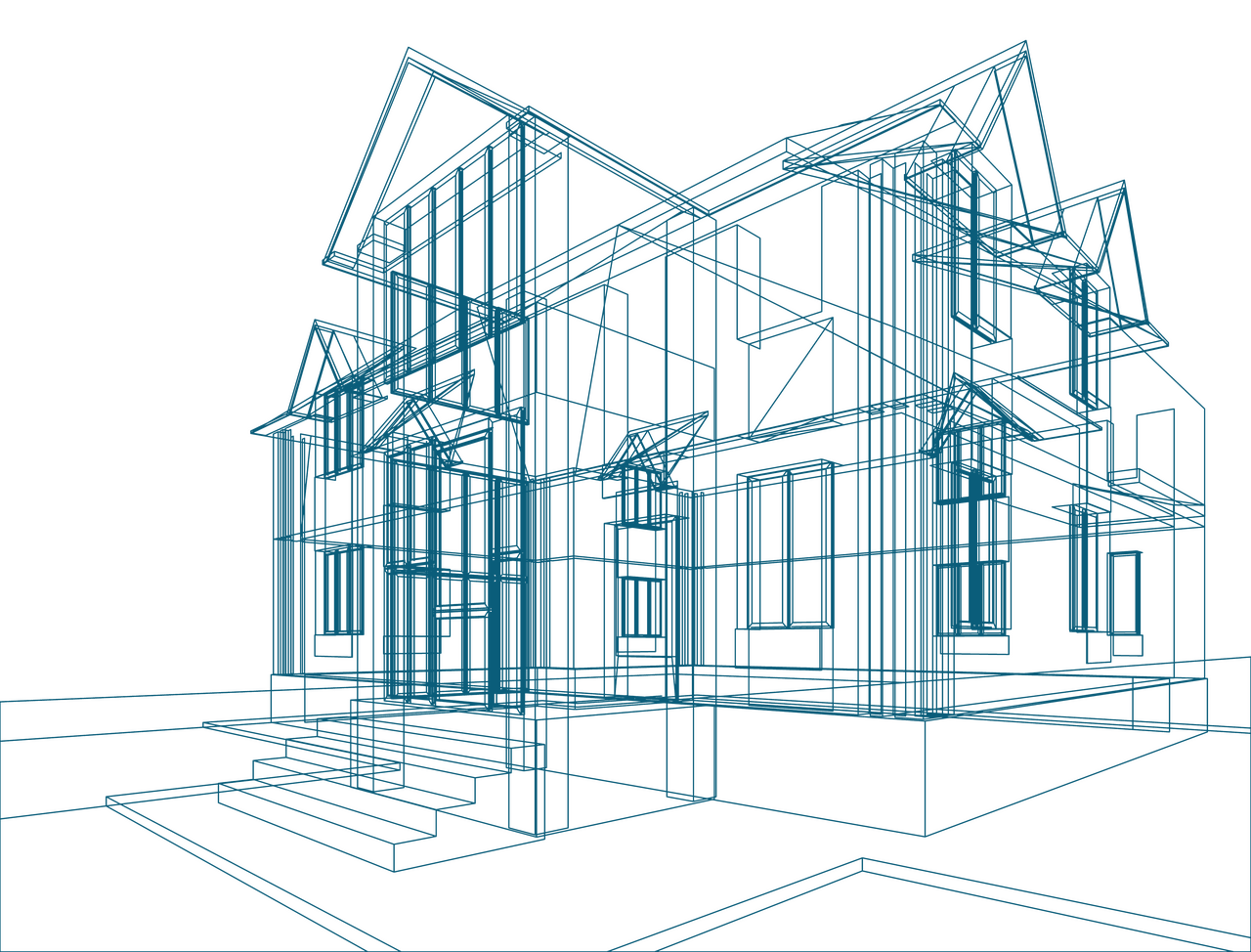


Market report
Prefab in Construction sector
Gain valuable insights into the contractor market with USP Research's Contractor Monitor. Stay informed about industry trends and make informed decisions with this comprehensive market report. Learn more here.
News I published 29 August 2022 I Dirk Hoogenboom
Contractors expect prefab usage to decrease
Over the past years, we have seen the use of prefabricated elements in building construction grow throughout the European construction market. The growth of prefabrication is famously connected with labour shortages and digitalisation in the construction sector.
As it allows for a more efficient way of constructing, reducing time and labour needed, prefab offers solid solutions in places where labour shortages are plaguing the construction sector. Meanwhile, using prefabricated elements can make the design and construction process much more complex, which is why prefab often goes and grows hand in hand with digitalisation and the use of building information modelling.
Clear though the connection with labour shortage and level of digitalisation may be, they are by no means the only trends in construction to drive or hamper the use of prefabrication, as is shown by the H1 2022 results of USP Marketing Consultancy’s Contractor monitor.
European contractors’ share of prefab projects grew but is expected to decline
Across the eight European countries where we interviewed contractors, some form of prefabricated building elements or off-site construction was used in 41% of their projects on average. This share has grown significantly since 2018, when prefab played a role in less than a third of contractors’ projects.
Interestingly, these European contractors expect to have fewer projects that include some form of prefab in the years to come. On average, they expect only 35% of their projects to contain some form of prefabrication or off-site construction in 2025, and 40% in 2030.
It is important to note though, that there are major differences per country both in current penetration of prefab and expectations for the future. The outliers in this spectrum of prefab usage form excellent examples to either prove the importance of labour shortages and digitalisation for prefabrication in construction, or to show that this connection can easily be overruled by other factors.
The Netherlands are the perfect breeding ground for prefabrication
With some form of prefabrication being used in a whopping 71% of contractors’ projects, prefab usage in the Netherlands is far above the European average. Contrary to the average expectations of European contractors, Dutch contractors expect that share to keep rising in the coming years, albeit at a slower pace. That prefab is so predominant in the Dutch construction market can for a large part be explained by the above-mentioned factors of labour shortage and digitalisation.
Housing shortages and the quest for more sustainable buildings majorly increased the demand for building construction in the Netherlands, adding to labour shortages that were relatively high to begin with. At the same time, the Dutch construction sector has one of the highest levels of digitalisation and BIM usage in Europe. Add the fact that the Dutch style of terrace houses fit prefab construction really well, and it is clear that the Netherlands are indeed a perfect breeding ground for prefabrication.
German contractors show that economic development determines expectations
As mentioned, the interviewed contractors expect their share of projects with some form of prefab to decline in the years to come, at least on average. Interestingly, the sharpest decline is expected by contractors in Germany. Currently, with 53% of projects containing prefabrication, German contractors show the second-highest level of prefab penetration. However, contractors expect this share to fall to a mere 21% by 2025.
Why these dramatic expectations in Germany though? Like in the Netherlands, labour shortages are also plaguing the German construction and installation sectors. And although the German construction sector is not at the top regarding the level of digitalisation, it is definitely not at the bottom either. In fact, Germany is also a solid usage of prefabrication, as is proven by its current second place. So what makes the German contractors so pessimistic regarding the usage of prefab in the short term?
A probable explanation is that together with the economy at large, the German construction sector is slowing down a bit. It is likely that this causes German contractors expect fewer projects. Fewer projects mean that labour shortages are less of a pressing issue, which neutralises a major driver for prefab usage. Additionally, prefab is mainly used for larger projects and a slowing economy can very well mean there will be fewer of those large projects to be done.
Altogether, this shows that economic development has a major influence on the expected development of prefabrication in construction that can overrule drivers like labour shortage and digitalisation. In the end, these expectations of contractors are only a part of the whole picture of developments and trends in the European construction sector. For a full overview we refer you to the H1 2022 report of USP Marketing Consultancy’s Contractor monitor.

Read more


12 December 2024 I Dirk Hoogenboom
Buying Behavior of Handymen


12 December 2024 I Henri Busker
Handymen Radar – Private Labels vs. Branded Products


12 December 2024 I Dirk Hoogenboom
Sustainability and Painting – What Matters Most?


12 December 2024 I Zeynep Kutsal
Are European Painters Getting Younger?

Fresh Insights Await
Our relevant reports
Delve into the newest findings across various market segments, crafted for a cutting-edge overview. Explore our insightful reports, brimming with up-to-date data, trend analyses, and in-depth examinations, all tailored to provide you with a comprehensive understanding of the current market dynamics.
Construction
Home Improvement
Installation
Special reports
Construction
Smart Materials and Buildings Q4 2024
2024 85 pages
Explore the evolving future in construction sector among European architects in Q4 2024. Delve into the factors driving material preferences and the impact on construction aesthetics and sustainability.
2,000 Euro
Construction
Digitalisation and BIM H2 2024
2025 64 pages
Uncover the preferred purchase channels of contractors in H2 2024, and understand how purchasing behaviors evolved. This report provides insights into the factors influencing purchasing decisions among contractors.
6,000 Euro
Construction
Decision making process Q3 2024
2024 87 pages
Unveil the decision-making processes in the construction industry through the lens of European architects. Discover the factors that influence crucial decisions and the interplay among different stakeholders.
2,000 Euro
Construction
Prefab H1 2024
2024 63 pages
Discover the adoption rate and benefits of prefabrication technology among European contractors in H1 2024. Understand the driving forces behind prefab usage and its impact on project efficiency and cost-saving.
6,000 Euro
Construction
Future of construction Q2 2024
2024 82 pages
Explore the evolving future in construction sector among European architects in Q2 2024. Delve into the factors driving material preferences and the impact on construction aesthetics and sustainability.
2,000 Euro
Construction
Sustainability 2024
2024 72 pages
Painter Insight Monitor 2024 will focus on understanding the specific needs, preferences, and challenges faced by painters when it comes to sustainable products.
11,000 Euro
Home Improvement
DIY vs DIFM Q4 2024
2025 76 pages
Explore the prevailing trends between DIY and DIFM in Q4 2024. Understand consumer preferences and the factors influencing their choice between DIY and DIFM.
3,500 Euros
Home Improvement
Branding Q3 2024
2024 74 pages
Discover the power of branding in the home improvement sector. Explore how strong branding influences consumer preferences and purchase decisions.
3,500 Euro
Home Improvement
European Garden Monitor
2023 43 pages
Explore the European Garden Monitor, a comprehensive platform dedicated to garden health monitoring in Europe. Access valuable resources and expert advice today.
12,000 Euro
Home Improvement
Purchase channels Q2 2024
2024 90 pages
The European Home Improvement Monitor offers valuable insights on purchase channels in the European home improvement industry, examining the evolving preferences and behaviors of consumers across traditional retail and emerging online platforms.
3,500 Euro
Home Improvement
Sustainability Q1 2024
2024 81 pages
Delve into sustainability trends in the home improvement sector in Q1 2024. Discover consumer preferences and the shift towards eco-friendly home improvement solutions.
3,500 Euro
Home Improvement
DIY versus DIFM Q4 2021
2024 113 pages
This report is a must-have if you’re in the home improvement industry. It provides a wealth of information on the behaviour of DIY and DIFM consumers, their motivations, and the factors that influence their purchasing decisions.
3,150 Euro
Installation
Training needs Q1 2025
2025 100 pages
This report offers an overview of installers’ habits and preferences concerning their education. Furthermore, the report encompasses the pervasive challenge of workforce shortage and explores the sector’s strategies for resolving this issue.
3,250 Euro
Installation
Media orientation Q4 2024
2025 128 pages
The European Mechanical Installation Monitor report provides a detailed analysis of the plumbing and HVAC industry. This report specifically focuses on Media Orientation in the industry.
2,800 Euro
Installation
Services in the installation sector Q4 2024
2025 102 pages
This report provides a comprehensive view of the installer's requirements for services from manufacturers. Within the report, you will find information on the most needed services in each category: commercial processes, engineering, products & installation, and repair & maintenance. It also examines the services that installers offer to their customers.
3,250 Euro
Installation
Prefab Q3 2024
2024 110 pages
Uncover the adoption of prefabricated products in HVAC installations during Q2 2022. Delve into the benefits and challenges associated with prefabrication in HVAC.
2,800 Euro
Installation
Prefab Q3 2024
2024 119 pages
This report offers a comprehensive view of the installers’ involvement and needs regarding prefabricated electrical installations.
3,250 Euro
Installation
Smart & Connected Products Q2 2024
2024 120 pages
This report provides a comprehensive view of the attitudes of installers toward smart building solutions, specifically among electrical installers and their clients. In the report, you will find insights into the installers' experiences with installing smart products and the willingness of end users to invest in such solutions, as well as their motivations and pain points.
3,250 Euro
Special reports
European Sustainability Report 2024
2025 51 pages
This report provides in-depth insights based on triangulation of key market information and data as well as data from USP Marketing Consultancy’s key monitors that are carried out year in, year out. The focus of this report is on the most important stakeholders within the construction industry, namely architects, contractors, electrical and HVAC installers within The United Kingdom, The Netherlands, Belgium, Germany, Poland, France, Italy, and Spain.
3,950 Euro
Special reports
European Sustainability Report 2024
2024 51 pages
This report provides in-depth insights based on triangulation of key market information and data as well as data from USP Marketing Consultancy’s key monitors that are carried out year in, year out. The focus of this report is on the most important stakeholders within the construction industry, namely architects, contractors, electrical and HVAC installers within The United Kingdom, The Netherlands, Belgium, Germany, Poland, France, Italy, and Spain.
3,950 Euro









